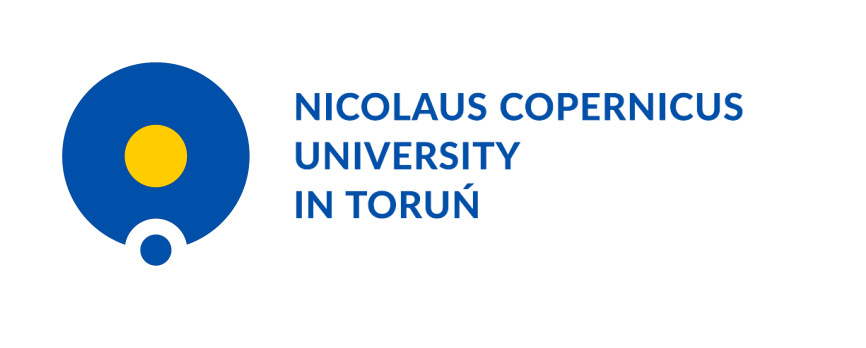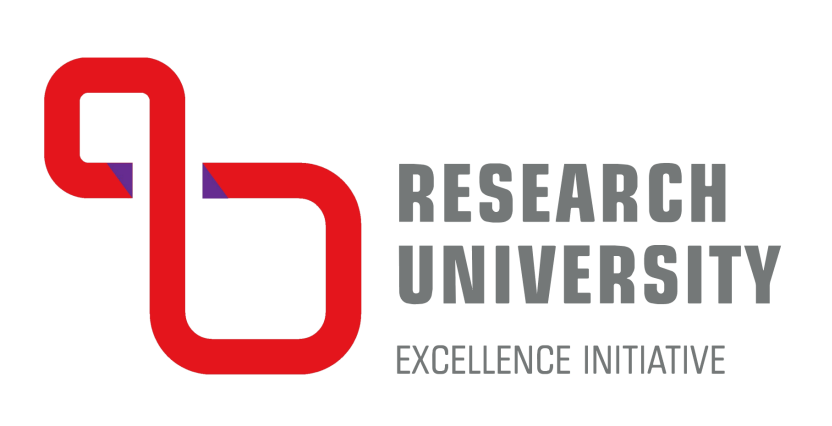Advisory Board
International Advisory Board Team was established as an advisory body to the Rector on matters concerning the whole project. The role of the Board is to evaluate the overall scientific results, coordinate the evaluation of the NCU, monitor the Centers of Excellence.
The Committee includes:
Prof. Ewine van Dishoeck – Professor of Molecular Astrophysics, Leiden Observatory, Leiden University (Netherlands), the President of the International Astronomical Union. Prof. Dishoeck researches molecules in space. She has gained world fame with her pioneering work. Her current passion is the hunt for water and the water cycle in space. This will provide answers to questions such as: where does the water in our rivers come from? And: could there be life on other planets?
Ewine van Dishoeck helped develop the most powerful telescopes in the world. She conducts research into thin, ice-cold clouds of gas that are found between the stars close to our own solar system, including in the Orion Nebula, of which the Hubble telescope has made such breath-taking images. These gas clouds contain all sorts of molecules that are already interesting in themselves: due to the unusual conditions in space, molecules are present that are not present on earth, or only very rarely. But another fascinating thing also occurs in many of these gas clouds: new stars and planets are born. Van Dishoeck looks at the formation process of these celestial bodies, and studies which molecules in these clouds will end up on one of these new planets. Her research combines observations, models and studies of the basic chemical processes in gas and ice.
Van Dishoeck has been awarded many prizes and honours, including the Kavli Prize for astrophysics in 2018, the highest scientific award in this field worldwide. She also received the Spinoza Prize in 2000, which the highest academic award in the Netherlands. She has also secured numerous research grants. Van Dishoeck is also known for her work on the development of different telescopes, like the Atacama Large Millimeter Array (ALMA). These are nearly always international collaboration projects in which Van Dishoeck assumes the role of bringing together people, resources and organisations.
Van Dishoeck conducts her research from the Leiden Observatory. With this observatory, Leiden University has one of the most illustrious institutes of astronomy in the world. She has also been awarded an ERC Advanced Grant, the highest European research grant for an individual. She was appointed Academy Professor by the Royal Netherlands Academy of Arts and Sciences (KNAW) in 2012, which has given her the opportunity to conduct research of her own choice for a period of five years. Furthermore, she is the most cited academic in the world in her field.
Prof. dr. James Fujimoto – Elihu Thomson Professor of Electrical Engineering and Computer Science at the Massachusetts Institute of Technology, a visiting professor of ophthalmology at Tufts University School of Medicine, and an adjunct professor at the Medical University of Vienna. His group and collaborators were responsible for the invention and development of optical coherence tomography (OCT). Their paper, “Optical Coherence Tomography,” published in Science in 1991, remains one of the most cited papers in the biophotonics field. Working with Carmen Puliafito and Eric Swanson, he was a cofounder of the startup company Advanced Ophthalmic Devices, which developed OCT for ophthalmic imaging and was acquired by Carl Zeiss. He also cofounded, with Eric Swanson and Mark Brezinski, LightLab Imaging, which developed cardiovascular OCT and was acquired by Goodman, Ltd. and St. Jude Medical.
In addition to publishing over 450 peer-reviewed journal articles and coediting 13 books, Dr. Fujimoto is an influential educator—numerous researchers who trained in his group are now leaders in photonics and biophotonics. He is also active in scientific service. He is a director of the International Society for Optics and Photonics (SPIE), has been general cochair of the SPIE BIOS symposium since 2003, and was program and general cochair for the 2002 and 2004 Conferences on Lasers and Electro Optics (CLEO), cochair of the 2005 European Conferences on Biomedical Optics, and director of the Optical Society of America from 2000 to 2003.
He received the Zeiss Research Award in 2011, the IEEE Photonics Award in 2014, and the Optical Society of America Ives Medal in 2015, Prize Russ in 2017. He is a co-recipient of the 2002 Rank Prize in Optoelectronics and 2012 Antonio Champalimaud Vision Award. He is a member of the National Academy of Engineering, National Academy of Sciences, and American Academy of Arts and Sciences, and has an honorary doctorate from the Nicolaus Copernicus University in Torun, Poland.
Prof. dr. Janusz Pawliszyn – University Professor, Canada Research Chair and NSERC Industrial Research Chair in New Analytical Methods and Technologies, fellow of the Royal Society of Canada, Department of Chemistry, University of Waterloo, Canada.
His research focuses on the development and application of state-of-the-art, integrated and automated analytical methods and instrumentation, for on-site analysis and monitoring. The primary focus of Janusz Pawliszyn’s research program is the design of highly automated and integrated instrumentation for the isolation of analytes from complex matrices and the subsequent separation, identification and determination of these species. Janusz Pawliszyn is exploring the application of the computational and modeling techniques to enhance performance of sample preparation, chromatographic separations and detection. The major area of his interest involves the development and application of imaging detection techniques for microcolumn chromatography, capillary electrophoresis and micro chip separation devices.
Professor Pawliszyn has supervised 50 PhD and 65 MS students and he is an author of over 650 scientific publications and a book on Solid Phase Microextraction. He is a Fellow of Royal Society of Canada and Chemical Institute of Canada, editor of Analytica Chimica Acta, Trends in Analytical Chemistry and a member of the Editorial Boards of Journal of Separation Science and Journal of Pharmaceutical Analysis. He initiated a conference, “ExTech”, focusing on new advances in sample preparation and disseminates new scientific developments in the area, which meets every year in different part of the world.
He has been awarded many prizes and honours, including 2008 Andrzej Waksmundzki Medal from Polish Academy of Sciences, 2008 Manning Principal Award, 2010 Torbern Bergman Medal from the Swedish Chemical Society, 2010 Ontario Premier’s Innovation Award, 2010 Marcel Golay Award, 2010 ACS Award in Separation Science and Technology, 2011 PittCon Dal Nogare Award, 2012 E.W.R. Steacie Award, 2013 CIC Environmental Research and Development Award, 2013 CIC LeSueur Memorial Award, 2015 Maria Skłodowska-Curie Medal from Polish Chemical Society, 2015 Halász Medal Award from the Hungarian Society for Separation Sciences, 2017 Pittsburgh Conference Analytical Chemistry Award, the 2017 Eastern Analytical Symposium Award for Outstanding Achievements in the Fields of Analytical Chemistry, 2018 ACS Award in Chromatography, 2018 North American Chemical Residue Workshop Excellence Award and 2019 Talanta Medal.
Prof. dr. Haun Saussy – University Professor at the University of Chicago, teaching in the departments of Comparative Literature and East Asian Languages & Civilizations as well as in the Committee on Social Thought. His work attempts to bring the methods and attitudes of comparative literature to bear on different periods, languages, cultures, and disciplines, without limitation to the humanities.
The Problem of a Chinese Aesthetic (Stanford UP, 1993; Wellek Prize, 1995) is a study of the tradition of commentary that has grown up around the early Chinese poetry collection Shi jing, raising questions of intercultural hermeneutics, the theory of figural language, and the relation between literature and philosophy. Great Walls of Discourse and Other Adventures in Cultural China (Harvard University Asia Center, 2001) offered an account of the ways of knowing and describing specific to China scholarship, Chinese as well as foreign. Translation as Citation (Oxford University Press, 2017; Wellek Prize, 2018) rewrites the history of translation in Chinese by accounting for the shadow the frequently indispensable mediation of a “sponsor text,” which acts as the model for a translation though it may never be mentioned by the translator.
This work on China is part of an investigation in comparative studies. One contribution to that field, the edited collection Comparative Literature in an Era of Globalization (Johns Hopkins University Press, 2006), begins with a long essay that reflects Saussy’s preoccupation with method. Are We Comparing Yet? (Bielefeld University Press, 2019) foregrounds the functions of comparison in pluralistic societies, including but not limited to comparative literature’s professional discourse.
The Ethnography of Rhythm (Fordham University Press, 2016; Scaglione Prize) shows how over many centuries the concepts of oral, writing, and the poetic were intertwined, often reversing their prior meanings as the shifts of argument and the development of techniques demanded.
Modernist poetry is one of the artifacts that has taught English-speakers how to respond to different cultures, Chinese in particular. This angle on modernism led to a critical edition of the manifesto of the Imagist movement in American poetry, The Chinese Written Character as a Medium for Poetry, by Ernest Fenollosa and Ezra Pound (edited with Jonathan Stalling and Lucas Klein, Fordham University Press, 2008).
As translator, Saussy has produced English versions of Li Zhi (A Book to Burn and a Book to Keep [Hidden], with Rivi Handler-Spitz and Pauline C. Lin, Columbia University Press, 2016), Jean Métellus (When the Pipirite Sings: Selected Poems, Northwestern University Press, 2019), and Tino Caspanello (Bounds, Laertes Press, 2020).
A wider interdisciplinary concern prompted the editing of Partner to the Poor: A Paul Farmer Reader (University of California Press, 2010), a collection of writings by a noted physician, activist and designer of global-health initiatives. Saussy’s introduction points to “the right to claim rights” as the fulcrum of vulnerable populations’ resistance to the dictatorship of the market.
A collective blog Saussy animates with several others is accessible at www.printculture.com.


 ul. Gagarina 7, 87-100 Toruń
ul. Gagarina 7, 87-100 Toruń